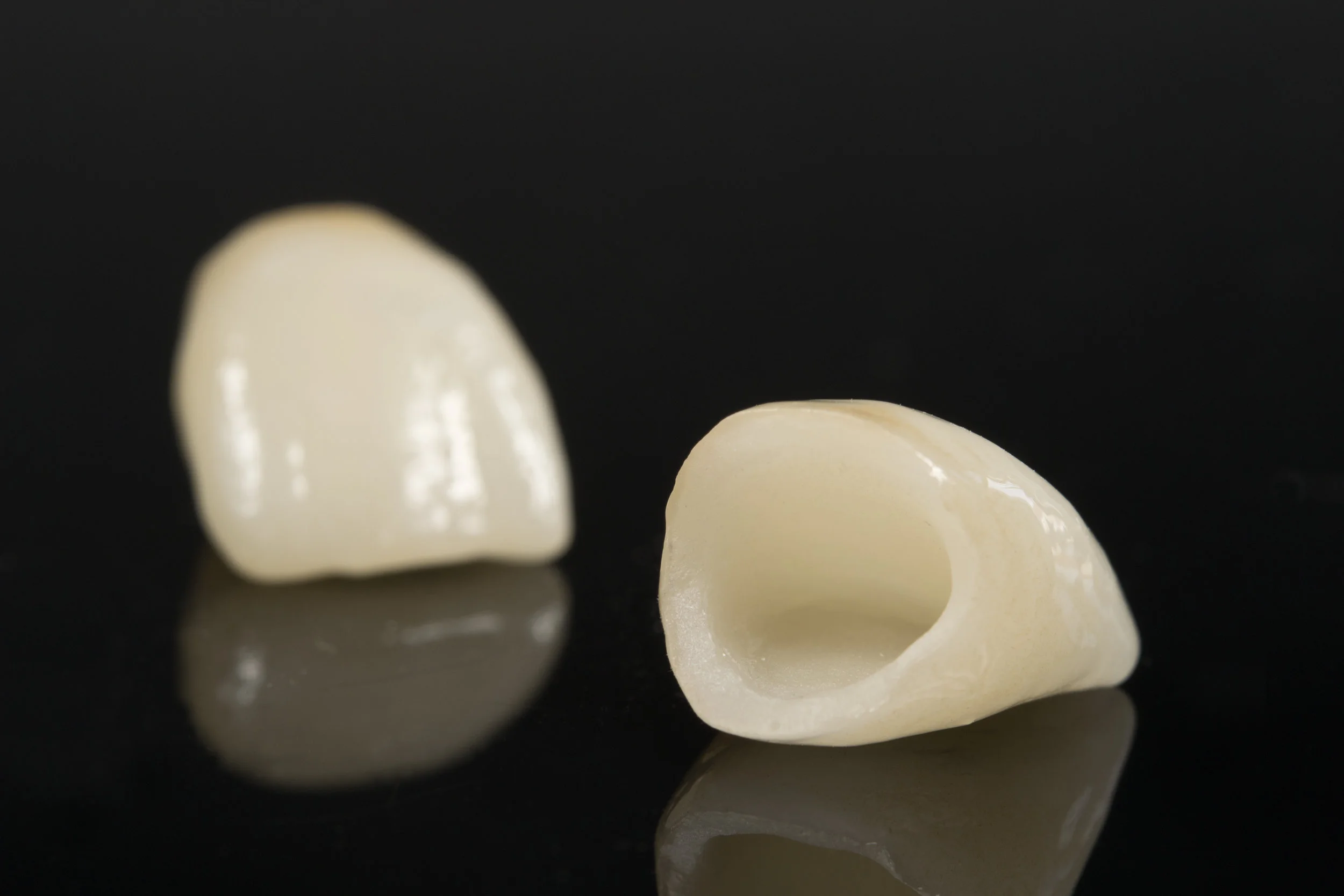So you think everything is going fine at your checkup cleaning appointment other than a little sharp edge you recently felt on a back tooth. It doesn't hurt or even bother you that much, but you mentioned it to the hygienist cleaning your teeth anyway. You think to yourself, "it probably just needs a little tiny filling or smoothed off a little bit and I'll be on my way."
The dentist comes in, does your exam, and recommends you fix your tooth with a crown!
So what is it? A crown, or a "cap" as it is often called, is what we refer to as a "full coverage restoration". It completely surrounds the tooth and is cemented or bonded to the underlying tooth structure.
Why do you need one? When a tooth is damaged either by decay, fracture, or some combination of both, it often isn't possible to restore a tooth to function and appearance any other way. Fillings need a large amount of surrounding healthy tooth structure for strength. A crown restores a badly damaged tooth and helps to protect what is left from further damage.
They cost how much?! It's true that a crown is one of the more expensive procedures a dentist performs, but there is a reason. Like most goods and services you buy, the cost of a crown is proportional to the time required to make it by a team of very skilled individuals. First the dentist has to reduce the remaining tooth structure in such a way as to preserve as much as possible while still removing decay, and fabricate a temporary crown. The impression is sent to a lab where a dental technician spends several hours doing model work, making, then finishing the crown. Then the overhead costs, materials, staff time, etc, factor in too. Yes, a crown is expensive, but if done correctly and properly maintained it should last several years and blend seamlessly with the surrounding teeth.

